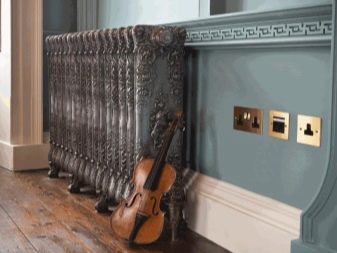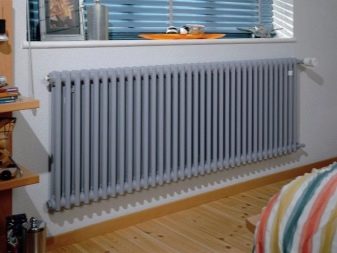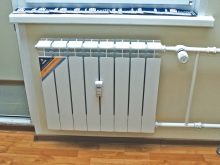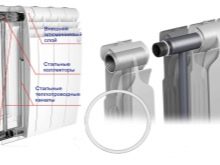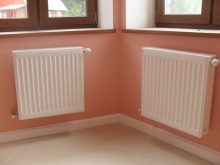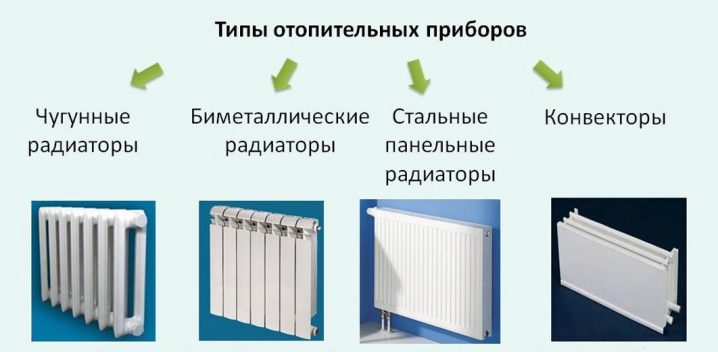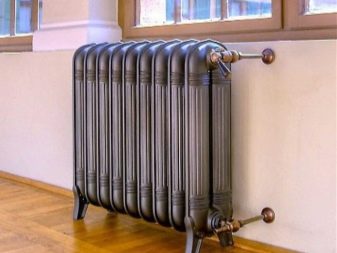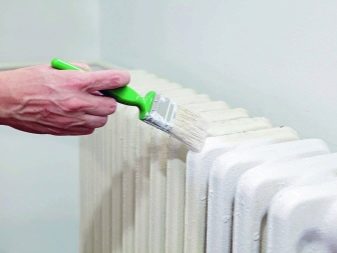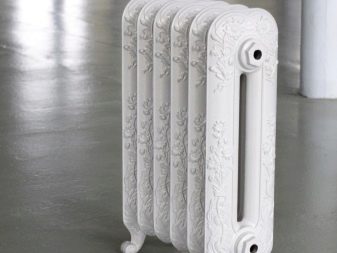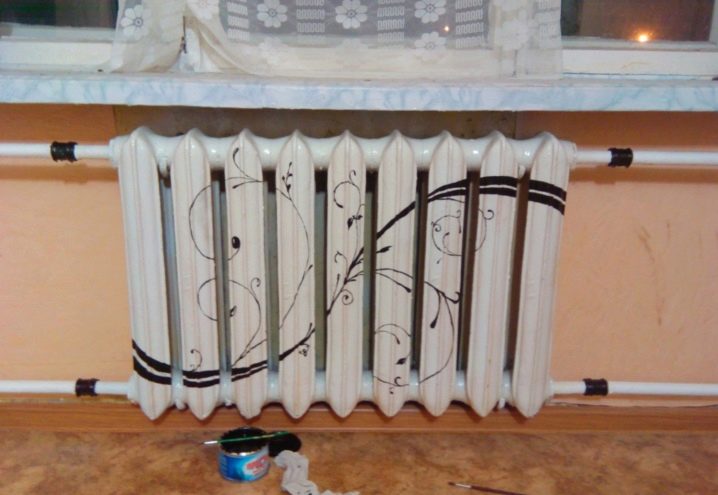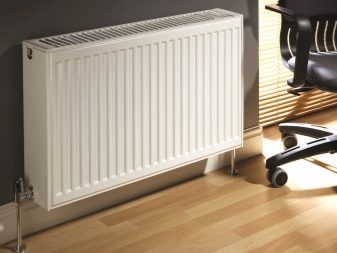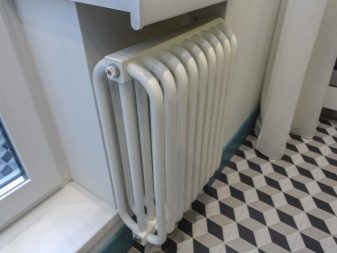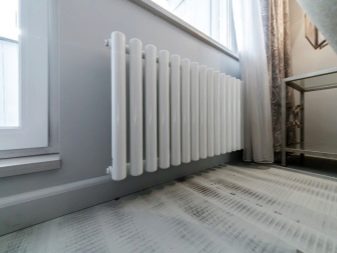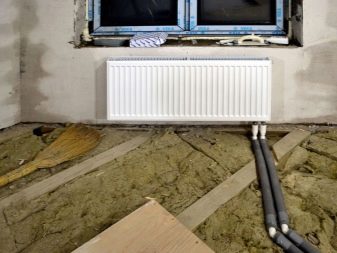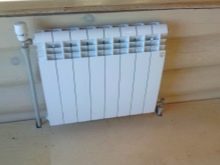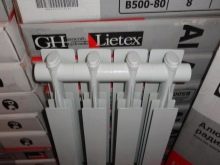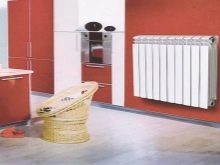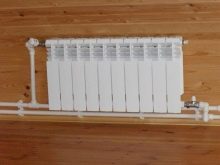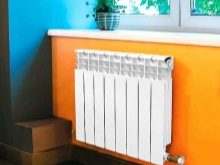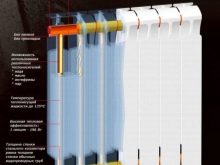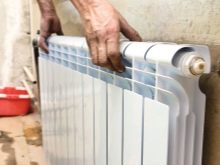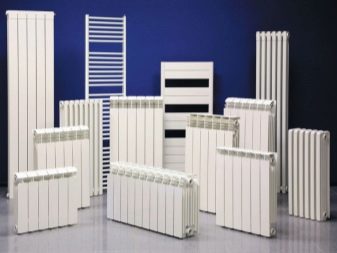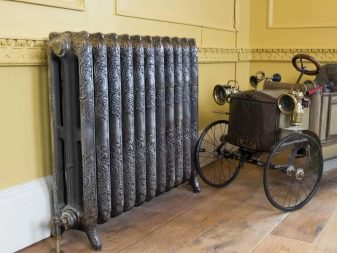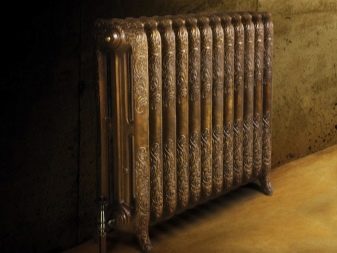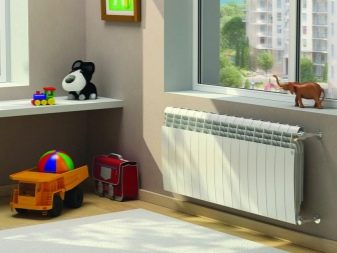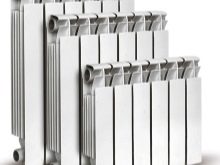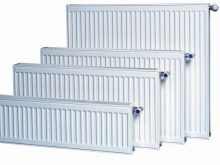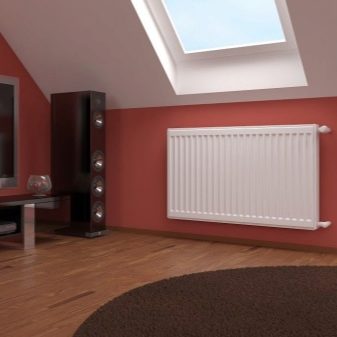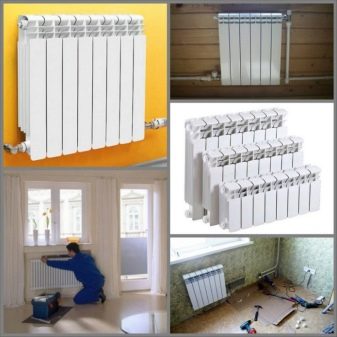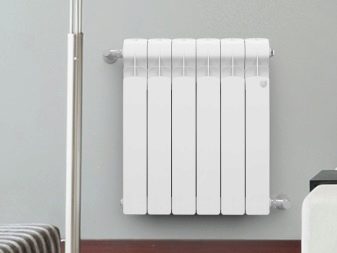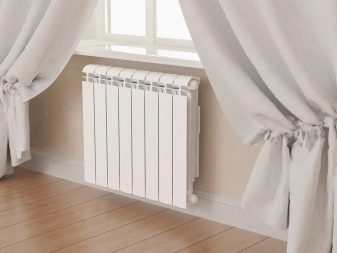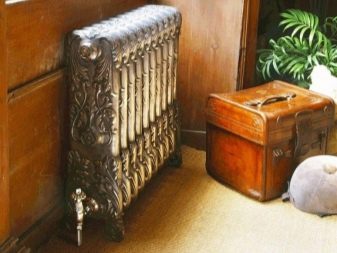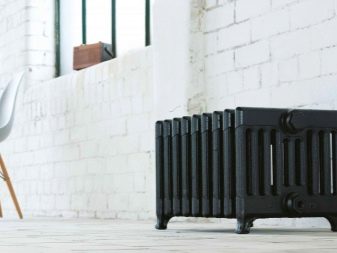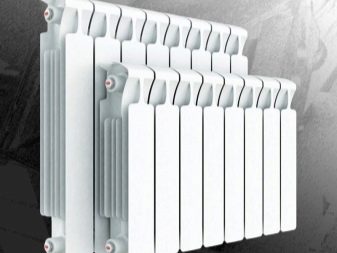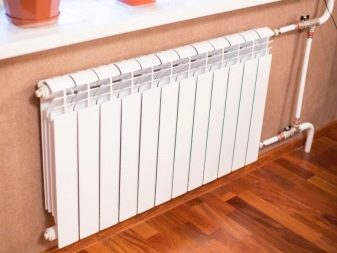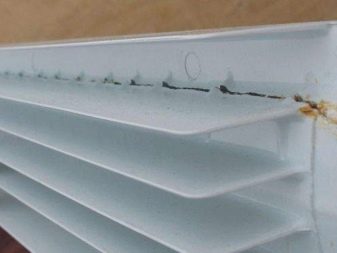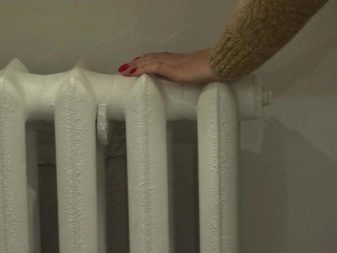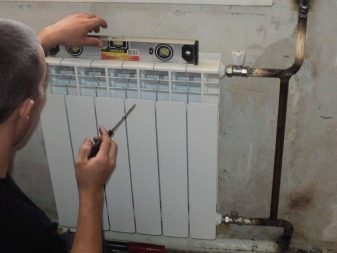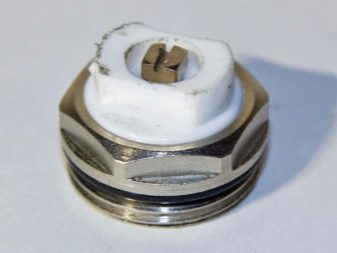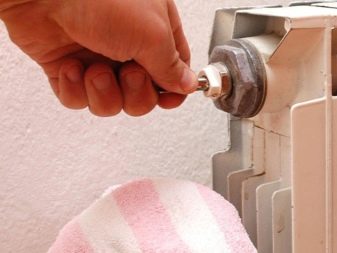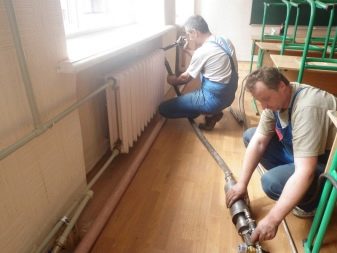Heating radiators: which is better to choose for an apartment, recommendations for use

Picking up the right batteries, you can not only say goodbye forever to the malfunctioning of the heating system, but also significantly improve the appearance of the room and even save money. In order to make the right decision, it is necessary to study the market of the presented products and determine which type is suitable for a particular case.
Main characteristics
One of the main characteristics of heating radiators is the pressure at which the device is able to function. Usually in central heating systems, water is transported under a pressure of 16 atmospheres, so the radiator must comply.This means that, like the working and test pressure, it should be higher. In addition, drops occur in a closed system that contribute to the occurrence of water hammer. Again, the radiator must be adapted to the likelihood of such situations. Pressure jumps can not be warned, but you can prepare for unpleasant consequences in advance.
Important are the materials of manufacture of batteries. There are such situations when the radiator is incompatible with the installed pipes and, as a result, the heating efficiency decreases or even the equipment fails.
The quality of the coolant, that is, water, in ordinary high-rise buildings with a central heating system leaves much to be desired. The battery must be suitable for use even with a liquid filled with grains of sand, pebbles and all sorts of impurities.
In addition, attention is drawn to the heat transfer - preference is given to devices that have this indicator higher.
Kinds
Types of modern radiators are made of different materials and, as a result, demonstrate different properties. The main difference is in the material from which the battery is made.Then the existing structures are already differentiated depending on the size, power, working pressure and other parameters.
Cast iron
Cast iron sectional batteries are able to serve up to 50 years. They are relatively reliable and do not impose special requirements on the characteristics of the coolant - water. Most often they can be found in homes in which the heating system operates according to the principle of natural circulation. Although such radiators can hesitate with heating, they retain heat for a long time. The designs are quite budget - their price varies from 2,000 to 3,500 rubles. Usually 4-7 sections of the battery are mounted, sections can be added or removed as needed.
Fails and appearance - modern cast iron radiators look much better than their predecessors and without any problems fit into the existing interior. Paint, which covered the structure, reliably protects against destruction. In addition, the batteries do not emit annoying sounds due to large concentrations of gases. Among the disadvantages of this type are the lack of durability and the inability to resist hydraulic shocks.Such batteries periodically will have to be “refreshed” with paint, in addition, they are too heavy, which indicates the difficulty of installation, and require a large amount of water. It remains to add that if the pipes become contaminated due to the not-so-successful “inside” of the material, the heat transfer will start to decrease.
The batteries heat up slowly and cool down just as slowly, that is, they are poorly controlled - the temperature inside the room will not change quickly.
Steel
Steel panel radiators are highly respected by US residents. The battery consists of two ribbed sheets made of high carbon steel and having special channels. The latter are designed to transport coolant. Sometimes it is equipped with a convector. The surface of the structure is degreased and then treated with a phosphate-based solution, which helps prevent rust. From above everything is covered with powder enamel. Such radiators are more suitable for private houses than for apartments, so they are rarely seen in ordinary high-rise buildings. The advantages of batteries include the presence of different sizes,allowing to “enter” the design even in a non-standard room, good heat transfer and the ability to act, even if the amount of water is extremely small.
The thickness of the walls of steel batteries is less than that of cast-iron ones, so the heating of the room is faster. In addition, a large surface area provides effective heat transfer. Radiators made of steel can be used in systems with one pipe and two pipes.
Among the minuses are their unreliability. For example, due to the fact that the pressure of the coolant is extremely low, with a water hammer, the structure can be damaged with greater force. It is worth adding that the walls are not protected from inside, which means that water gradually destroys the radiator. Also, from time to time it is necessary to remove dust from those places that it is not convenient to get to. Such a battery can work up to 15 years.
In addition to the panel, there are also steel tubular radiators with better performance. They are reliable, resistant and function with greater pressure. In addition, the tubular patterns are different and more attractive design.
By installing steel radiators, you will first have to calculate how many plates are needed, because, unlike cast iron ones, it will not be possible to increase the number of sections.The reason is that the closed loop does not allow changing the structure. In addition, you should not use them in conditions of high pressure - that is, in homes whose number of floors exceeds 5.
Aluminum
Aluminum radiators as well as cast iron, are sectional. This means that the design can be assembled independently, taking into account the features and configuration of the heated room. Such batteries heat the room very quickly, they weigh little and do not take up much space. Both high power, minimalist design, good working pressure, and reasonable price are pleasing to the customer.
This variety cools very quickly when the system is turned off and the room quickly freezes through. The material is easily exposed to rust attack and is able to work only with coolant with certain characteristics. Finally, it is contraindicated to combine aluminum structures and connecting elements made of brass or copper. Otherwise, the battery will start to rust from the inside, which will quickly disable it. Therefore, preference is given to plastic tubes.
Radiators made of aluminum differ in height, so they can be placed as comfortably as possible in different parts of the apartment. They look very modern and easy to install due to their low weight. The outer side is covered with a protective solution of polymers, which will protect the structure from damage.
In addition, when the inside of an aluminum battery begins to come into contact with a coolant saturated with oxygen, hydrogen gas appears. The bubbles of this product will provoke unpleasant sounds, getting into the system. To prevent such a situation, it is necessary to develop a gas removal system.
Bimetallic
Bimetallic combines steel pipes and aluminum fins. Such designs have a high heat transfer ability and very durable elements. In bimetallic batteries, the coolant moves under high pressure (usually around 35 atmospheres), so they cope with it without any problems. Such radiators can serve much more than other varieties - up to 25 years. They can also function, despite the small amount of water.Of course, the main disadvantage of this variety is the high cost of the sections. In addition, due to the fact that the tubes are quite narrow, the collectors often become clogged. They are also extremely sensitive to the presence of oxygen in the composition of the coolant.
Bimetallic samples heat up quickly, but also cool quickly. In such a room, a thermostat can increase or decrease the temperature in a room in a short time. The batteries look great, are easy to install and weigh moderately. With the ability to add or subtract sections, it is possible to calculate the optimal amount suitable for a particular room. Finally, it should be remembered that when installing this type of structure, it is necessary to observe a gap of 4 centimeters to the window sill, floor and wall.
Rating models and reviews
Modern models sold on the market are produced by both domestic and foreign firms. It happens that they differ among themselves even in technical characteristics. For example, the filling volume of imported Czech cast iron batteries is significantly lower than the Russian ones.
The most recognized foreign manufacturers are firms from Germany, Italy, the Czech Republic, Spain and other European countries. Batteries of their production are characterized by smooth and high-quality treated external surfaces, as well as increased thermal capacity and compact size. Smoothness helps the normal circulation of coolant and resists the appearance of sand and dirt on the walls. Retro-style cast iron radiators are often decorated with plant images.
According to reviews, some samples of Russian and Belarusian production do not lose at all abroad, for example, MS-140 or MS-90. However, the price of such models is less than twice. In addition, domestic models are sold with primed surfaces, which then require painting. Samples made in Europe can be mounted immediately. Also, Russian and Belarusian radiators do not look particularly aesthetically pleasing.
It is also worth noting that modern models can be classified depending on the price segment to which they belong. Radiators made of aluminum alloy and cast iron are considered economical, this is the lowest class. The middle class includes steel and bimetallic structures. The most prestigious are stainless steel batteries, some bimetallic samples and cast-iron designer models.
How to choose?
To find the best radiator for heating an apartment, you need to take into account several important factors. First, this pressure, which is indicated by the manufacturer. The allowable figure must exceed the pressure in the heating system of an apartment building. Secondly, whether radiators are able to withstand water hammer. This ability is also determined by pressure, and usually some problems are reported by knocks and other unusual sounds in batteries. Thirdly, radiators' resistance to low-quality heat carriers is also important. It is better to put the structure, the inner layer of which is covered with a protective composition. In addition, the choice should be made in favor of pipes of sufficient thickness, which will not rub under the influence of stones and sand.
The next important factor is the level of heat release, which determines how quickly the rooms will warm up. Then, of course, goes the look - the battery should be modern, concise and appropriate to the existing room design. Attention should be paid to the service life - it is always better when the radiator is able to function for many years without interruption.Both the number of sections and the existing capacity are important. It, in turn, is determined depending on the type of building, that is, whether it is made of panels or bricks, the area of the room you want to heat, the number of windows, their quality (that is, the type of glazing), and many other parameters. The number of sections depends on the power and on the goals.
Before choosing a radiator, you also need to deal with central heating and its difference from the autonomous system. In the first case, the heat enters the apartment from an external heat source, for example, from a boiler room or a local thermal power plant. Such a system is very accessible, it is relatively easy to maintain, it works on inexpensive fuel, and during the process no harmful substances are emitted. However, pipes are very quickly exposed to rust, thinning, plus high pressure can cause water hammer. The main disadvantage is temperature jumps during the heating season.
The autonomous system is independent and allows regulating both the heating and the hot water supply in the apartment. The pressure inside it is low, so the owner is insured against water hammer and further harm.An independent system saves money, and a higher quality coolant extends the lifetime. Unfortunately, such a system is difficult to install, there will be spending on repairs and maintenance, plus a special installation permit will be required.
In general, when choosing a radiator, one should look not only at the advantages, but also at the disadvantages of a particular model. Steel samples are low and have a large surface that improves the transfer of coolant. Such a battery weighs a little - it is easy to transport and install. Also a plus is the fact that nozzles can be located in any places, and not just in the corners, which means that the structure itself can be positioned in any chosen place.
Unfortunately, radiators made of steel are not particularly attractive in appearance, someone even calls them boxes. They withstand only low pressure and are not additionally protected from rust, which reduces their service life. It is worth adding that the design cools very quickly. It can be concluded that it is recommended to buy steel batteries in a situation of limited funds, but only if the apartment is located in a five-story building with low pressure.central heating system.
Aluminum batteries are more expensive than steel batteries, but they have better performance. Such radiators have a very high ability to give off heat, so you can save space in the room and use a smaller design. Working pressure is also higher than that of the steel sample, in addition, due to the properties of the material can not be afraid of corrosion.
However, as with any model, aluminum batteries have drawbacks. The material itself is exposed to all chemicals that are contained in the water. For example, when acidity changes, oxidation and evolution of hydrogen will occur. Also, if brass connectors are installed, corrosion may occur, followed by leakage and other problems. Summing up, it should be said that the aluminum battery will serve perfectly in those houses where high-quality water flows through the pipes and do not need to be afraid of pressure drops. For example, it may be a private house or cottage.
Modern cast iron batteries are chosen by connoisseurs of design solutions. - thanks to an unusual form, patterns and a touch of antiquity, real works of art are created.It can be added that such structures due to thick walls can not be afraid of corrosion and acidity. The disadvantages include slow heating and cooling processes, the need for very hot water that can cope with massive elements. You will need to mount a stable system of fasteners, because the usual will simply not withstand the heavy construction. Therefore, we can conclude that cast iron radiators are suitable for rich or creative residents who live no higher than the 5th floor.
Yet the best battery is bimetallic. It can work with any pressure - up to 35 atmospheres, is rather indifferent to the composition of water - it withstands acidity, mechanical damage, and high temperature. Such a heater is easily mounted and transported. The only downside is the impressive cost. As a result, this battery is suitable for any houses and any purposes.
Possible malfunctions during operation
During the operation of the radiator there may be various failures. There are several reasons for this. First, the buyer could initially choose the wrong design.Not taken into account were either the diameters of the pipes, or the pressure in the central system, or the water temperature. Secondly, flaws could occur during installation. All because of - the existing working conditions. As an example, in the event of an increase in the acidity of water and the occurrence of periodic water hammer, metal will start to corrode. If the water is of poor quality, the formation of plaque, clogged radiators and other problems will begin. Finally, some parts may be damaged due to the end of the service life. For example, old gaskets placed between sections of the battery can wear out and nipples collapse.
If the batteries click, this does not always indicate a breakdown. It is quite possible that this is a feature of the functioning of radiators, and only enhanced sound insulation that will damp the knock can help. Therefore, it is still worth contacting specialists.
In general, it is necessary to call masters in the following cases:
- if the radiators are cold and not warm, although the heating season is on;
- if on fastenings and in those points where parts are joined, a raid is made;
- if there is a leak or a radiator has burst;
- If the batteries have an expiration date, although they still work with periodic repairs, in most situations it is easier to replace an old battery than to patch it.
Many batteries, mainly of iron and bimetallic, consist of sections. It is correct to carry out routine inspection in a warm season, but often problems arise just in cold weather. If the battery starts to leak, then a leak is detected rather quickly. If the problem place cannot be found, then the radiator will have to be disconnected, dismantled and put into a bath or other deep water tank. Where there are air bubbles, there is a violation of integrity. After you can begin to repair. The problem area is cleaned to the metal, while removing the layers of paint, winding and the old gasket. Then the problem is covered with a special tool in two or three layers, and everything is fixed with a clamp. You will also need to fix the bolts and Gadget. After the end of the heating season, it is better to replace the repaired radiator with a new one, since the putty will no longer act after a while.
Another common problem is the air in the battery. It can most often be removed only by professionals; it is not recommended to try to cope with this procedure yourself. Air plugs occur due to differences in the operation of air collectors, violation of the technology of filling with water from the beginning of the heating period, the lack of slopes during installation and other reasons. Specialists who came to the call, remove the air from the system, not fully unscrewing the plugs at the ends, as well as check all radiators to prevent the appearance of air bubbles.
If the battery is modern and not made of cast iron, then in principle you can remove the airlock yourself. Mayevsky's crane, which is installed on the radiator, opens, then the air starts to go out. As soon as the hissing stops, and the water begins to flow without bubbles, you can close the valve. During this procedure, it is imperative to be careful and first prepare the basin for draining water and some kind of cloth.
Separately it is necessary to indicate why the batteries are noisy The reason may be different liner diameters and their improper installation, pressure surges, the presence of air in the system.Radiators also knock when the metal expands from heat and some movement occurs. You can fix the problem by laying special rubber washers. Finally, the device is buzzing due to improper installation of the thermal valve or the noise of the pump in the boiler room. In general, when batteries crash, it still speaks of minor problems that are easy to fix, and not serious breakdowns.
If a shut-off valve does not open properly on any line, then it must be fully opened by applying physical force. This can be done personally.
If pipes or fittings are clogged, then again, you should call a specialist. They dismantle the required area, clean it and put it back in place. If the blockage is too strong, then replacement is required.
If there is no heat insulation of batteries, then it is necessary to make screens on the radiator itself, and also to process the wall behind it with a special material. For example, it may be foam with foil.
Cold pipes most often speak of faults outside the apartment. If the pipes are hot, and the batteries still do not warm up the room, then either the valves are closed, or this is a clogged system.The cold upper part of the structure indicates the presence of an airlock, and the cold lower part indicates problems with valves, clogging and low pressure in the pipes. If only one of the cold batteries in a room is cold, then the system is not set up, and there is not enough pressure for maintenance.
Even with the deterioration of the heating is to talk with the neighbors. If they are in a similar situation, then the fault is the poor performance of the general-purpose boiler or the closed valves in the basement. To solve the problem will have to consult with the management company.
See which video radiator is better in the video below.

